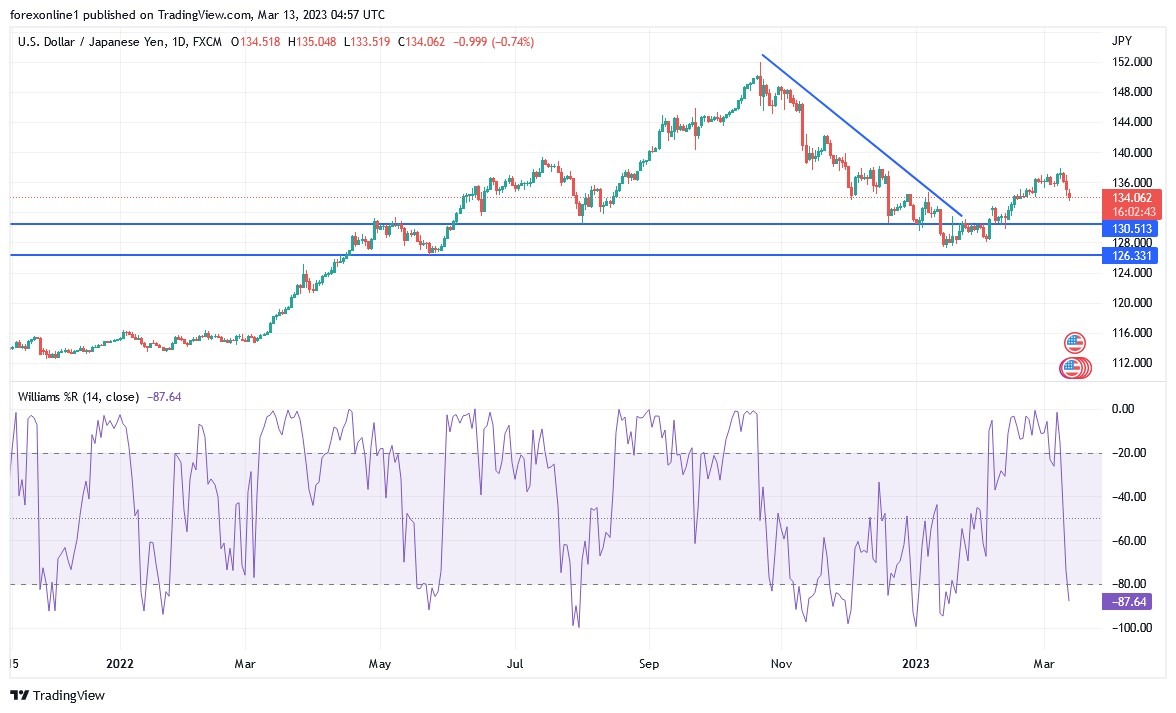The dollar against the Japanese yen USD/JPY is still heading to the upside, despite the currency pair's collapse on Friday to the support level at 134.11, its lowest in two weeks. This was before closing the week's trading around the level of 135.06, after announcing a divergence in US job numbers last Friday. The data is in its upward trajectory, which affected the resistance level 137.91, its highest in three months.
Ahead of the US jobs numbers, the Bank of Japan decided to keep interest rates and monetary policy unchanged, which led to a rapid boost in USDJPY. The yen bulls were disappointed to find that Kuroda refrained from making any adjustments to the yield curve control policy and target range.
According to official figures, the US labor market continued to surprise with another month of strong job creation in February. But beneath the surface, the details were a little mixed up. The good news is that more people are joining the workforce, including women and minorities, and wage growth for many workers has actually accelerated. On the other hand, job gains were concentrated in a few industries and the number of hours worked decreased, on average.
Here is a breakdown of the pros and cons from the latest US employment report:
Positives:
US payrolls grew by 311,000 last month, beating all but one estimate in a Bloomberg survey of economists. It was the 11th straight month in which job growth exceeded expectations, extending the longest streak in data compiled by Bloomberg to 1998.
The labor force participation rate — the share of the population that is working or looking for work — rose to 62.5%, the highest rate since March 2020. Rates also rose for workers ages 25-54, women and minorities. The employment-to-population ratio of working adults — the ratio of those ages 25 to 54 — has rebounded to pre-pandemic levels. This complements the good news from the increased participation rate because it shows that these people are not only in the workforce, but that they have a job.
Wages of production workers and non-supervisors - who make up the majority of US employees and are not in management positions - advanced 0.5%, the largest increase in three months driven mainly by service industries. The average duration of unemployment fell to 8.3 weeks - the lowest level since July, indicating that the unemployed are getting a job more quickly. The average measurement fell to the lowest level since July 2020
The construction sector, which often gives an early sign of economic trouble when it slows down, continued to move forward. The industry added 24,000 jobs in February, even amid a slump in the housing market. Personnel working in temporary jobs increased for the second month in a row after consecutive sharp declines at the end of last year. This category is seen as a major indicator of labor demand.
Negatives:
Average hourly earnings, which includes supervisors, rose 0.2% from the previous month — below expectations and the lowest advance in a year. The average workweek was shortest at 34.5 hours in February. This can be a worrying sign as employers tend to cut hours ahead of employees when demand wanes.
The so-called diffusion index, which tracks the spread of employment gains across industries, fell to the lowest level since April 2020. The report showed that most of the overall advance in the payroll was due to employment in leisure, hospitality, retail and health. Taken together, a measure of weekly gross payrolls — which provides a broader read of changes in earnings, hours, and employment — posted the smallest advance since the decline two years ago.
The number of job losers and those completing temporary jobs rose by 223,000 in February, the most since the early months of the pandemic.
Technical analysis of the dollar pair against the yen:
- Friday's bearish move is the beginning of a breach of the USD/JPY's bullish trend.
- The upside opportunity still has a chance.
- The 100 SMA remains slightly above the 200 SMA to indicate that the general trend is still bullish or that the support is more likely to continue than broken. In this case, USD/JPY may recover to the top of the channel at 138.50 or at least to the middle at 137.50.
Stochastic has some room to climb before it reverses overbought levels or exhaustion among buyers, but it is worth noting that the oscillator seems to be topping. The RSI has a lot of ground to cover before hitting the overbought territory as well, but the oscillator seems to be hesitant at the halfway point. A break below the support level could lead to a bullish trend reversal, waiting for the next catalyst.
Ready to trade our Forex daily forecast? We’ve shortlisted the best Forex trading brokers in the industry for you.



